The Best Fluffy Pancakes recipe you will fall in love with. Full of tips and tricks to help you make the best pancakes.
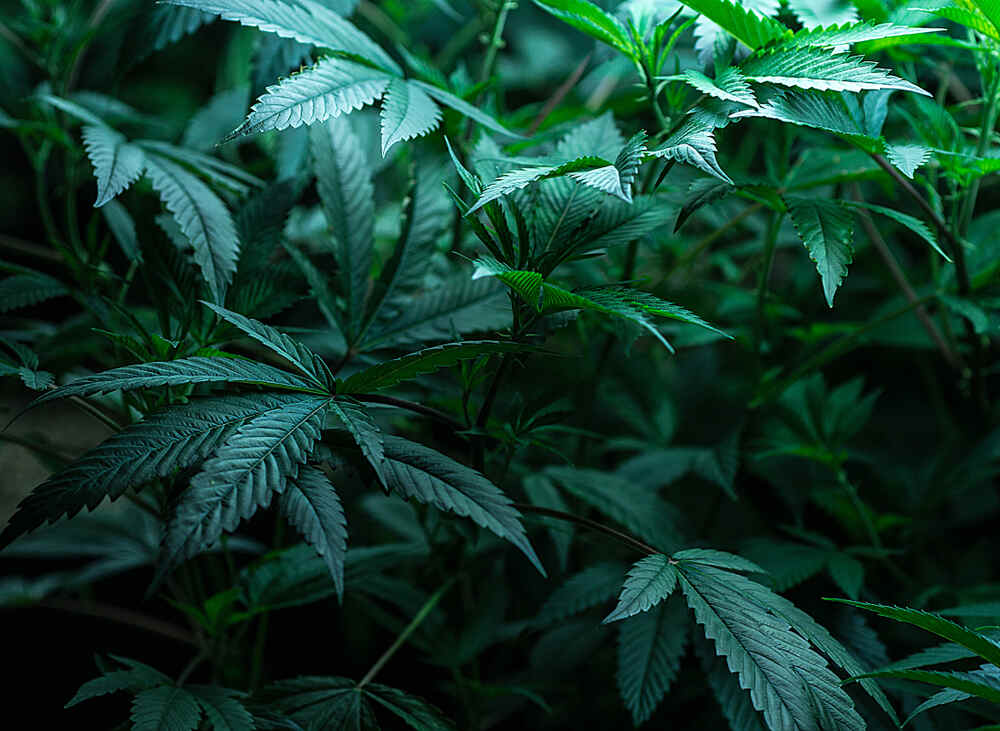
How Long Do Autoflowers Stay in the Veg Stage?
Autoflowers have flipped the script on traditional cannabis cultivation, especially when it comes to the vegetative phase. As a breeder who’s spent years selecting traits for autoflower stability and vigor, I can tell you this: autos don’t play by the same rules as photoperiods. Instead of waiting for light cycles to change, they follow their own genetic clock. And this has a direct impact on how long your autoflower stays in veg — and how much yield you can expect.
This guide is built to help you understand exactly how the veg stage works for autos — how long it lasts, what to look for, and how to set things up for strong, healthy growth before the switch to flowering. Let’s get into it.
What Is the Vegetative Stage in Autoflowers?
Definition and timing compared to photoperiod strains
The vegetative stage is the period of your plant’s life when it focuses on growing roots, stems, and leaves — everything that supports bud production later. For photoperiod strains, you control how long the veg lasts by keeping your lights at 18/6 or longer. But autoflowers? They’re on autopilot.
Autoflowers usually stay in veg for 2 to 4 weeks before entering flower. Unlike photoperiods, they don’t care whether the lights are on 18/6, 20/4, or even 24/0. The change isn’t environmental — it’s genetic. They veg as long as their internal clock says so, and then shift gears into flower.
LSI: “auto veg stage duration,” “autoflower veg length”
You’ll see terms like “autoflower veg length” and “auto veg stage duration” tossed around by growers trying to dial in yields. In my experience, shorter veg durations (2–3 weeks) are common in compact, fast-finishing strains like Lowryder descendants, while some newer hybrids might stretch the veg to 4 weeks or slightly more — especially if they’re sativa-leaning. It’s all about genetics.
Week-by-Week Timeline of Veg Growth
Week 1–2: seedling to early veg — growth signs
From the moment your seed cracks and sprouts its first cotyledons, you’re officially in the early stages. Weeks 1–2 focus on root development and early leaf production. Your seedling is absorbing light, pushing out fan leaves, and establishing a strong base.
By the end of week 2, your plant should be showing:
- 2–3 sets of true leaves
- Steady vertical growth
- Thicker stem structure
If you’re using a high-quality medium and proper lighting, you’ll notice the difference fast. I recommend a gentle nutrient regimen here — mostly nitrogen and a splash of beneficial microbes to supercharge the root zone.
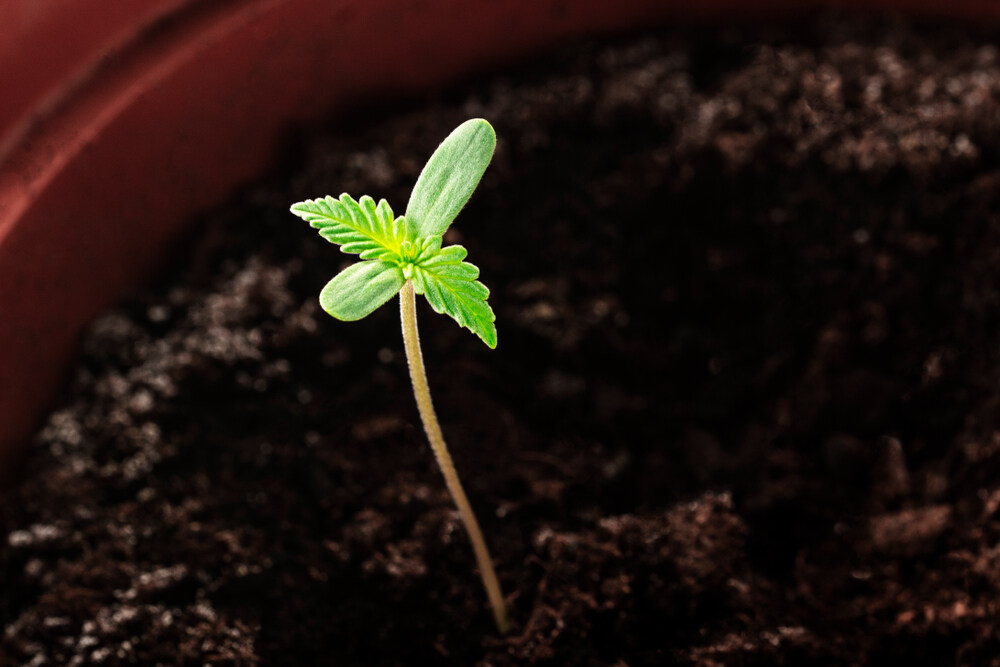
Week 3–4: peak vegetative growth — height, leaf count
Weeks 3 and 4 are where autos hit the gas. This is the phase where your plant stretches vertically and pushes out new nodes daily. The internodal spacing becomes obvious, and side branches begin to form. This is your last window to do any training like LST (low-stress training) before pre-flowers start to show.
What you’ll see during this phase:
- Rapid increase in height (depending on strain)
- 5–7+ sets of leaves
- Bushier structure if trained correctly
This is also when you want to dial in your environment — keep your temps around 24–27°C (75–80°F) with a relative humidity of 50–60%. This encourages explosive veg growth.
H3: LSI: “autoflower veg timeline,” “how many weeks veg autoflower”
To break it down:
- Most autoflowers veg for 2–4 weeks
- Some newer, more “photoperiod-like” autos might stretch to 5 weeks
- Tiny, fast autos might show pistils as early as day 17–18
“Autoflower veg timeline” and “how many weeks veg autoflower” are questions I get asked constantly. The short answer? It depends on your strain’s genetic lineage. Always check breeder notes, but assume you’ve got around 3 weeks of true veg to work with.
Signs That Veg Stage Is Ending
When pre‑flowers show — pistils at nodes
Your plant will let you know when veg is wrapping up. The most obvious sign? Pre-flowers. These are tiny pistils that emerge at the nodes — typically around day 21–28. Once you see these white hairs, your plant is shifting from vegetative growth into early flower.
At this point:
- Internodal spacing stops expanding
- New vertical growth slows
- Flowering hormones start to take over
You’ll still see new leaves, but their shape and size will shift toward sugar leaves instead of fan leaves.
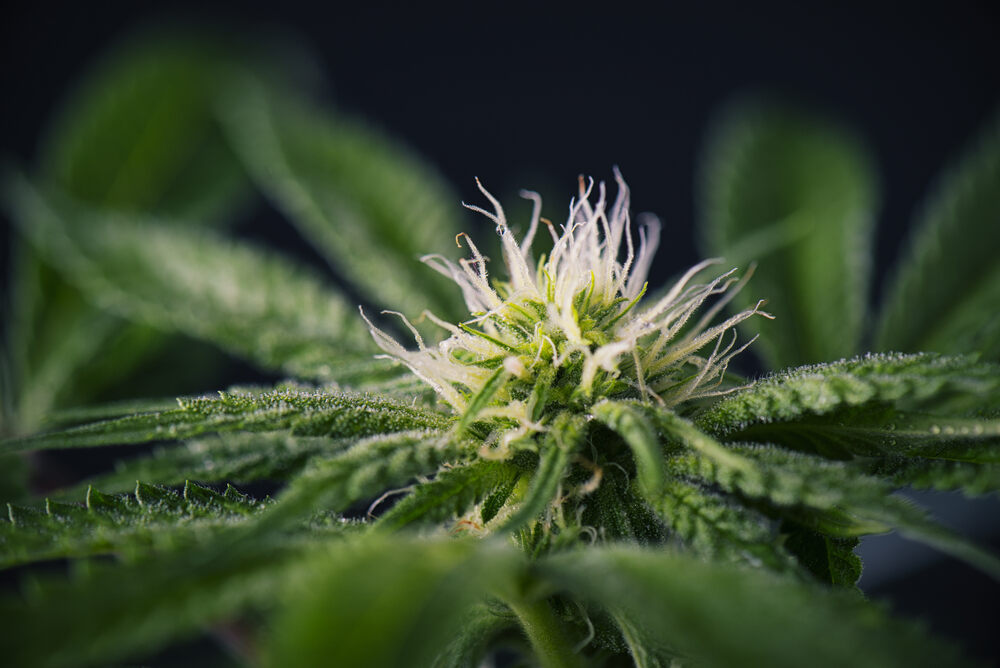
Growth rate slowdown and structural shifts
As the veg stage ends, growth pivots. You’ll notice the plant slows down in height and starts bulking laterally. The main stalk might get thicker, and you’ll see tighter node spacing. This is the perfect time to stop any training and switch focus to bloom prep.
Here’s what to look for:
- Stem thickening
- Less new vegetative leaf formation
- Initial bud sites forming at branch tips
This structural transition is part of what makes autos so efficient. They waste zero time.
LSI: “autoflower pre-flower signs,” “veg to flowering auto”
Look for terms like “autoflower pre-flower signs” when diagnosing where your plant is at. Knowing this moment helps you adjust your feeding schedule, back off nitrogen, and ease into bloom nutrients. It’s also the clear sign your autoflower is moving from “veg to flowering auto.”
Factors That Influence Veg Length
Genetics and strain differences — indica vs sativa hybrids
Genetics are the number one factor that decides how long your autoflower stays in veg. Indica-dominant autos like Northern Lights Auto typically veg for 2–3 weeks and stay compact. Sativa-leaning strains like Amnesia Haze Auto might stretch the veg to 4+ weeks before flowering kicks in.
Here’s what influences duration:
- Fast-finishing indicas = Shorter veg
- Sativa hybrids = Longer veg
- F1 autos or XL strains = Potentially 5-week veg
Light cycle effects — 18/6 vs 20/4 vs 24h
Autos don’t need darkness, but I’ve found a 20/4 light cycle gives the best balance of energy and recovery. While you can run lights 24/0 for constant photosynthesis, some strains stress under continuous light.
Light cycle tips:
- 18/6 = Less stress, moderate growth
- 20/4 = Optimal for most autos
- 24/0 = Maximum light exposure, higher heat risk
While light doesn’t control the switch to flower in autos, it can impact how fast they move through veg. More light = faster growth, which might shorten the window slightly.
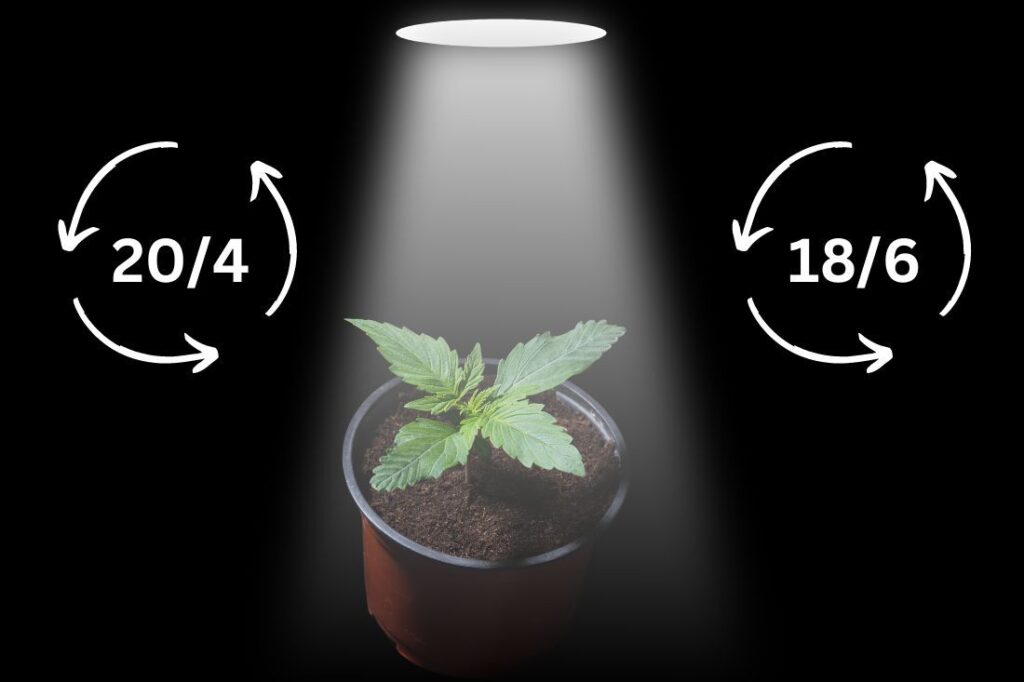
Nutrient strategy — NPK ratios, feeding schedule
During veg, your autos need more nitrogen (N) to fuel green growth. I start feeding around day 10 with a light-strength veg formula (around 3-1-2 NPK). Overfeeding early can stunt growth and shorten the veg window.
Feeding approach:
- Start with ¼ strength at day 10–14
- Ramp up to full strength by day 21
- Switch to bloom nutes when pistils show
Too much nitrogen past the veg stage can lead to leafy buds and delays in flower development.
Environmental conditions — temp, humidity, training methods
Your grow room environment also affects veg development. Autos are sensitive — too much stress early on and you might end up with a stunted, underperforming plant.
Keep in mind:
- Temps: 24–27°C (75–80°F)
- RH: 60% early veg, down to 50% before flower
- CO₂: Optional, but beneficial if you’re advanced
- Training: Use only low-stress methods like LST in veg
If you top or FIM an autoflower during veg, do it no later than day 14–16, or you risk triggering flower before she’s ready.
LSI: “autoflower veg conditions,” “veg stage nutrients auto”
“Autoflower veg conditions” are all about keeping stress low, roots oxygenated, and foliage healthy. When searching for feeding schedules, use “veg stage nutrients auto” to find ratios tailored to the short veg window.
Can You Extend the Veg Stage in Autos?
Genetic limits — why autos can’t be veg-stretched
Unlike photoperiods, autoflowers aren’t light-dependent. That means you can’t keep them in veg longer by adjusting your light schedule. Their internal timer flips the switch regardless. You can’t force an autoflower to wait, no matter how much you beg her.
Why you can’t stretch veg:
- It’s coded into their DNA
- Ruderalis genetics control the lifecycle
- Flowering begins once maturity hormones trigger
This also means you need to nail early-stage growth. There’s no time to waste.
Risks of delaying flowering — stress, yield impact
Some growers try to slow veg with cold temps, low light, or transplant stress. Don’t. You’ll only trigger stress responses — like stunted growth, leaf curl, or reduced yields. Any shock during early veg shortens your already limited window.
Possible risks:
- Smaller plants = smaller harvest
- Early pistils under stress = loose bud structure
- Extended veg with no growth = wasted time
LSI: “extend veg autoflower,” “autoflower training veg”
Search terms like “extend veg autoflower” might lead you to dodgy advice. What works? “Autoflower training veg” — gentle LST, strong root zones, proper feeding, and solid lighting.
Maximizing Veg Stage for Better Yields
Low-stress training timing and methods
I always start LST at day 14–16, once I have 3–4 nodes. This gives your autoflower a chance to recover and spread out before switching to flower. Don’t snap stems or overdo it — use wire, garden ties, or hooks to bend the main stem sideways.
LST boosts yield by:
- Creating an even canopy
- Exposing lower bud sites to light
- Increasing airflow between branches
Optimizing light, nutrients, and environment
Here’s how I set things up to squeeze the most out of the veg window:
- Light: 20/4 with full spectrum LEDs
- Nutes: Start light, feed weekly, adjust based on leaf color
- Airflow: Oscillating fans for stem strength
- Training: LST early, stop at pre-flower
A happy plant in veg lays the foundation for a monster in flower.
Recommended veg duration per strain category
While you can’t force autos to stay in veg longer, you can pick strains known to veg a little more before flipping:
- Compact Indicas (e.g., Northern Lights Auto): ~2.5 weeks veg
- Balanced Hybrids (e.g., Girl Scout Cookies Auto): ~3.5 weeks veg
- Sativa-dominant autos (e.g., Amnesia Haze Auto): 4+ weeks veg
Choose your genetics wisely — more veg time = bigger plant = more buds.
Conclusion
Autoflower veg stages are short, but when done right, they set the stage for incredible results. You’re looking at a 2–4 week window of rapid, unforgiving growth. This means you need to prep your environment, feed properly, train carefully, and give your plants exactly what they need — all in a tight timeframe.
There’s no room for error, but there’s plenty of room for growth. Time it right, and your autos will reward you with solid yields and top-shelf quality — all from a few quick weeks of vegetative hustle.


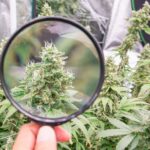

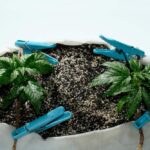
Im not fully sure but i came across a pod cast and heard that ur pot size can affect ur trigger to flower as well. The more ur roots can move its vegging, then once they start to fillup the pot and bound up, them root tips get stressed. They push aganst the pot and then thats what triggers ur plant to wanna flower. Never tested the theory myself but wow it makes sense. Ive had autos begin flower in solos like2wks in before because i didnt transplant them properly. So then i heard that theory and thats when it hit me🤨Ah-HA 🤔 i cant remember the episode where i seen it either😖 Thank you for the lessons 🫡 Keep it growing!! 🤙🏻